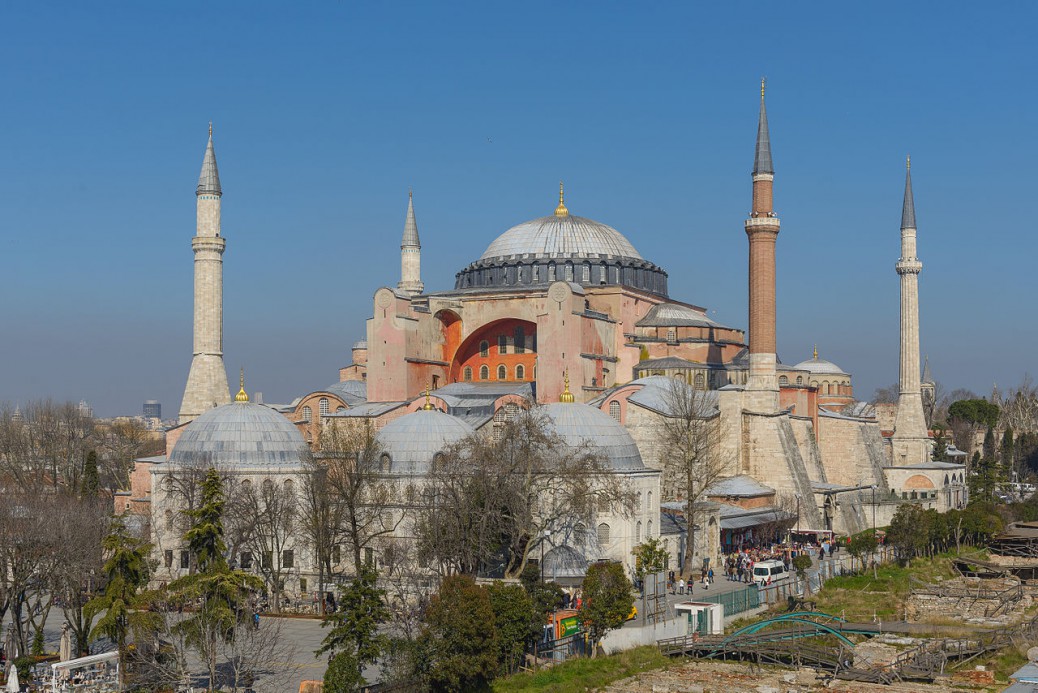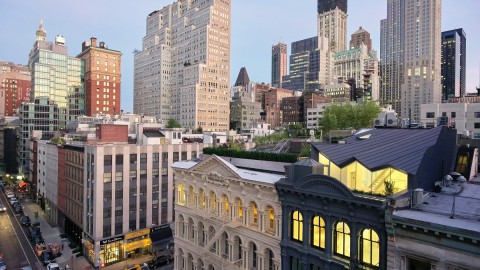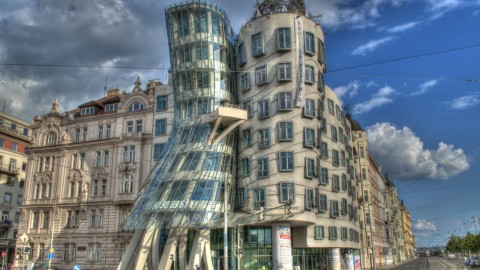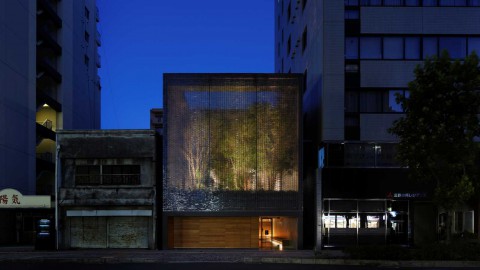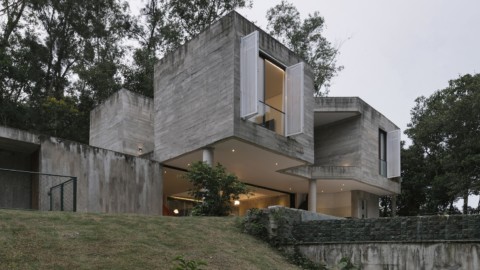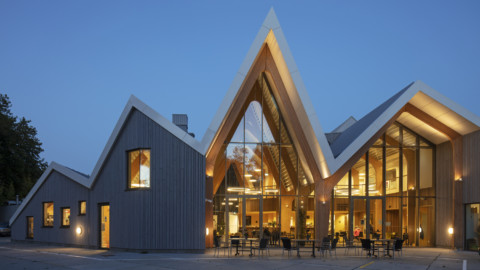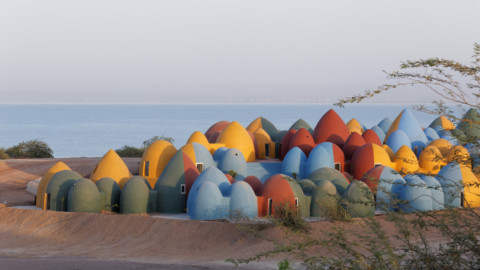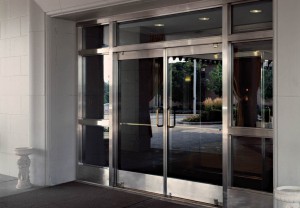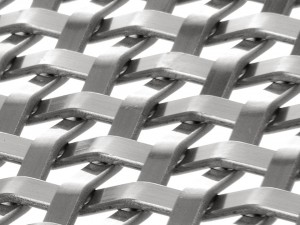Hagia Sophia 聖索菲亞大教堂
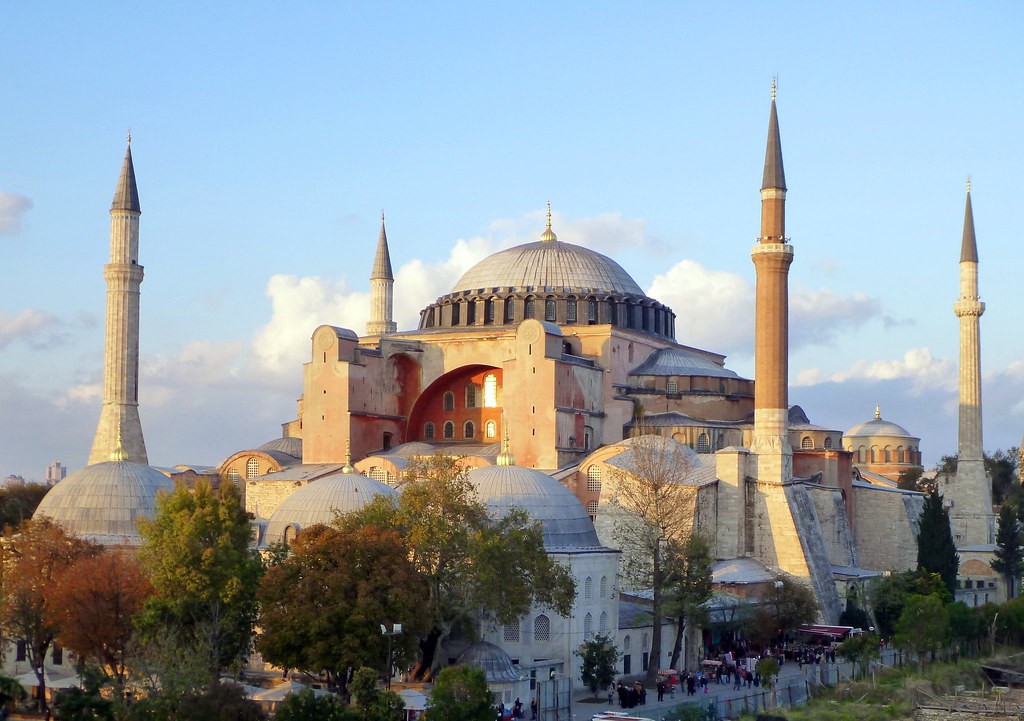
Hagia Sophia (/ˈhɑːɡiə soʊˈfiːə/; from the Greek Αγία Σοφία, pronounced [aˈʝia soˈfia], “Holy Wisdom”; Latin: Sancta Sophia or Sancta Sapientia; Turkish: Ayasofya) is the former Greek Orthodox Christian patriarchal cathedral, later an Ottoman imperial mosque and now a museum (Ayasofya Müzesi) in Istanbul, Turkey. Built in 537 AD at the beginning of the Middle Ages, it was famous in particular for its massive dome. It was the world’s largest building and an engineering marvel of its time. It is considered the epitome of Byzantine architecture and is said to have “changed the history of architecture”.
The Hagia Sophia construction consists of mostly masonry. The structure is composed of brick and mortar joints that are 1.5 times the width of the bricks. The mortar joints are composed of a combination of sand and minute ceramic pieces displaced very evenly throughout the mortar joints. This combination of sand and ceramic pieces could be considered to be the equivalent of modern concrete at the time.
From the date of its construction’s completion in 537 until 1453, it served as an Eastern Orthodox cathedral and the seat of the Ecumenical Patriarch of Constantinople, except between 1204 and 1261, when it was converted by the Fourth Crusaders to a Roman Catholic cathedral under the Latin Empire. The building was later converted into an Ottoman mosque from 29 May 1453 until 1931. It was then secularized and opened as a museum on 1 February 1935. It remained the world’s largest cathedral for nearly a thousand years, until Seville Cathedral was completed in 1520.
The current building was originally constructed as a church between 532 and 537 on the orders of the Byzantine Emperor Justinian I and was the third Church of the Holy Wisdom to occupy the site, the prior one having been destroyed by rioters in the Nika Revolt. It was designed by the Greek geometers Isidore of Miletus and Anthemius of Tralles. The church was dedicated to the Wisdom of God, the Logos, the second person of the Trinity, its patronal feast taking place on 25 December, the commemoration of the birth of the incarnation of the Logos in Christ. Although sometimes referred to as Sancta Sophia (as though it were named after Sophia the Martyr), sophia being the phonetic spelling in Latin of the Greek word for wisdom, its full name in Greek is Ναός της Αγίας του Θεού Σοφίας, Naos tēs Hagias tou Theou Sophias, “Shrine of the Holy Wisdom of God”. The church contained a large collection of relics and featured, among other things, a 15-metre (49 ft) silver iconostasis. The focal point of the Eastern Orthodox Church for nearly one thousand years, the building witnessed the excommunication of Patriarch Michael I Cerularius officially communicated by Humbert of Silva Candida, the papal envoy of Pope Leo IX in 1054, an act that is commonly considered the start of the East–West Schism.
In 1453, Constantinople was conquered by the Ottoman Empire under Mehmed the Conqueror, who ordered this main church of Orthodox Christianity converted into a mosque. Although some parts of the city of Constantinople had fallen into disrepair, the cathedral had been maintained with funds set aside for this purpose, and the Christian cathedral made a strong impression on the new Ottoman rulers who conceived its conversion. The bells, altar, iconostasis, and other relics were destroyed and the mosaics depicting Jesus, his Mother Mary, Christian saints, and angels were also destroyed or plastered over. Islamic features – such as the mihrab (a niche in the wall indicating the direction toward Mecca, for prayer), minbar (pulpit), and four minarets – were added. It remained a mosque until 1931 when it was closed to the public for four years. It was re-opened in 1935 as a museum by the Republic of Turkey. Hagia Sophia was, as of 2014, the second-most visited museum in Turkey, attracting almost 3.3 million visitors annually. According to data released by the Turkish Culture and Tourism Ministry, Hagia Sophia was Turkey’s most visited tourist attraction in 2015.
From its initial conversion until the construction of the nearby Sultan Ahmed Mosque, aka the Blue Mosque of Istanbul, in 1616, it was the principal mosque of Istanbul. The Byzantine architecture of the Hagia Sophia served as inspiration for many other Ottoman mosques, including the Blue Mosque, the Şehzade Mosque, the Süleymaniye Mosque, the Rüstem Pasha Mosque and the Kılıç Ali Pasha Complex.
On 24 March 2019, the President of Turkey Recep Tayyip Erdoğan said that the Hagia Sophia might be reverted to a mosque.
Hagia Sophia(/hɑːɡiəsoʊfiːə/;來自希臘語ΑγίαΣοφία,發音為[aʝiasofiaia],“聖潔智慧”;拉丁語:Sancta Sophia或Sancta Sapientia;土耳其語:Ayasofya)是前希臘東正教基督教家長式大教堂,後來是奧斯曼帝國清真寺和現在博物館(AyasofyaMüzesi)在伊斯坦布爾,土耳其。建於公元537年,在中世紀初,它以其巨大的圓頂而聞名。這是世界上最大的建築和當時的工程奇蹟。它被認為是拜占庭式建築的縮影,據說“改變了建築史”。
聖索非亞大教堂的建築主要由磚石建築組成。該結構由磚和灰漿接頭組成,其寬度是磚的寬度的1.5倍。砂漿接縫由砂和微小陶瓷塊的組合組成,這些陶瓷塊在砂漿接縫中非常均勻地移位。沙子和陶瓷件的組合可以被認為是當時的現代混凝土。
自建造完成之日起,從537年至1453年,它作為東正教大教堂和君士坦丁堡普世大主教的所在地,除了在1204年至1261年之間,當時它被第四次十字軍改建為羅馬天主教大教堂。拉丁帝國。該建築後來於1453年5月29日至1931年被改建為奧斯曼帝國清真寺。1935年2月1日,它被世俗化並作為博物館開放。它一直是世界上最大的大教堂近一千年,直到塞維利亞大教堂於1520年完工。
根據拜占庭皇帝查士丁尼一世的命令,目前的建築最初是在532至537之間建造的,並且是第三個佔據該地點的聖智慧教堂,之前的一座教堂被尼卡起義中的暴徒摧毀。它由Miletus的希臘幾何學家Isidore和Tralles的Anthemius設計。教會致力於上帝的智慧,邏各斯,三位一體的第二人,12月25日舉行的盛宴,紀念基督裡的邏各斯的化身。雖然有時被稱為Sancta Sophia(好像它是以Sophia the Martyr的名字命名),sophia是希臘語中為智慧的拉丁語拼音,但它在希臘語中的全名是ΝαόςτηςΑγίαςτουΘεούΣοφίας,NaostēsHagiastou Theou Sophias,“神聖智慧聖殿”。教堂內藏有大量文物,其中包括一個15米(49英尺)的銀色聖像。作為東正教會近一千年的焦點,該建築見證了族長Michael I Cerularius在1054年教皇Leo IX的教皇特使Silva Candida的亨伯特正式傳達,這一行為通常被視為開始東西方分裂。
1453年,君士坦丁堡被征服者穆罕默德征服奧斯曼帝國,後者命令這座正統基督教教堂改建成清真寺。雖然君士坦丁堡市的一些地方已經失修,但是大教堂一直保留著為此目的留出的資金,基督教大教堂給那些構想其轉變的新奧斯曼統治者留下了深刻的印象。鐘聲,祭壇,聖像和其他文物被摧毀,描繪耶穌,他的母親瑪麗,基督徒聖徒和天使的馬賽克也被摧毀或塗抹。增加了伊斯蘭特色 – 例如米哈拉布(壁上的利基表示朝向麥加的方向,祈禱),迷你吧(講壇)和四個尖塔。它一直是一座清真寺,直到1931年才對公眾開放四年。它於1935年作為土耳其共和國的博物館重新開放。截至2014年,聖索非亞大教堂是土耳其第二大訪問量最大的博物館,每年吸引近330萬遊客。根據土耳其文化和旅遊部公佈的數據,聖索菲亞大教堂是土耳其2015年訪問量最大的旅遊景點。
從最初的轉換到1616年附近的蘇丹艾哈邁德清真寺(又名伊斯坦布爾藍色清真寺)的建造,它是伊斯坦布爾的主要清真寺。聖索非亞大教堂的拜占庭建築為許多其他奧斯曼清真寺提供了靈感,包括藍色清真寺,Şehzade清真寺,蘇萊曼清真寺,RüstemPasha清真寺和KılıçAliPasha Complex。
2019年3月24日,土耳其總統雷傑普·塔伊普·埃爾多安說,聖索非亞大教堂可能會被歸還一座清真寺。
Coordinates:41°00′31″N 28°58′48″ECoordinates: 41°00′31″N 28°58′48″E
Location:Istanbul (historically Constantinople), Turkey
Designer:Isidore of Miletus
Anthemius of Tralles
Type:
Byzantine Christian Cathedral (537–1054)
Greek Orthodox Cathedral (1054–1204, 1261-1439)
Roman Catholic Cathedral (1204–1261, 1439-1453)
Ottoman Mosque (1453–1931)
Museum (1935–present)
Material:Ashlar, brick
Length:82 m (269 ft)
Width:73 m (240 ft)
Height:55 m (180 ft)
Beginning date:532
Completion date:537; 1482 years ago
Website:ayasofyamuzesi.gov.tr
UNESCO World Heritage Site
Part of:Historic Areas of Istanbul
Criteria:Cultural: i, ii, iii, iv
Reference:356
Inscription:1985 (9th Session)
坐標:41°00’31“N 28°58’48”ECoordinates:41°00’31“N 28°58’48”E
地點:伊斯坦布爾(歷史上君士坦丁堡),土耳其
設計師:Miletus的Isidore
Tralles的Anthemius
類型:
拜占庭基督教大教堂(537-1054)
希臘東正教大教堂(1054-1204,1261-1439)
羅馬天主教大教堂(1204-1261,1439-1453)
奧斯曼清真寺(1453-1931)
博物館(1935年至今)
材質:方石,磚
長度:82米(269英尺)
寬度:73米(240英尺)
高度:55米(180英尺)
開始日期:532
完成日期:537; 1482年前
網址:ayasofyamuzesi.gov.tr
聯合國教科文組織世界遺產
部分:伊斯坦布爾歷史區
標準:文化:i,ii,iii,iv
參考:356
銘文:1985年(第9屆)
Architecture
Hagia Sophia is one of the greatest surviving examples of Byzantine architecture. Its interior is decorated with mosaics and marble pillars and coverings of great artistic value. The temple itself was so richly and artistically decorated that Justinian proclaimed, “Solomon, I have outdone thee!” (Νενίκηκά σε Σολομών). Justinian himself had overseen the completion of the greatest cathedral ever built up to that time, and it was to remain the largest cathedral for 1,000 years up until the completion of the cathedral in Seville in Spain.
Justinian’s basilica was at once the culminating architectural achievement of late antiquity and the first masterpiece of Byzantine architecture. Its influence, both architecturally and liturgically, was widespread and enduring in the Eastern Orthodox, Roman Catholic, and Muslim worlds alike.
The vast interior has a complex structure. The nave is covered by a central dome which at its maximum is 55.6 m (182 ft 5 in) from floor level and rests on an arcade of 40 arched windows. Repairs to its structure have left the dome somewhat elliptical, with the diameter varying between 31.24 and 30.86 m (102 ft 6 in and 101 ft 3 in).
At the western entrance side and eastern liturgical side, there are arched openings extended by half domes of identical diameter to the central dome, carried on smaller semi-domed exedras; a hierarchy of dome-headed elements built up to create a vast oblong interior crowned by the central dome, with a clear span of 76.2 m (250 ft).
Interior surfaces are sheathed with polychrome marbles, green and white with purple porphyry, and gold mosaics. The exterior, clad in stucco, was tinted yellow and red during restorations in the 19th century at the direction of the Fossati architects.
建築
聖索菲亞大教堂是拜占庭式建築中最偉大的倖存者之一。其內部裝飾有馬賽克和大理石柱子以及極具藝術價值的覆蓋物。寺廟本身是如此豐富和藝術裝飾,查士丁尼宣稱,“所羅門,我已經超越了你!” (ΝενίκηκάσεΣολομών)。查士丁尼本人已經監督了當時建造的最偉大的大教堂的建成,並且在西班牙塞維利亞大教堂建成之前,它仍然是1000年來最大的大教堂。
查士丁尼的大教堂立刻成為古代晚期的建築成就,也是拜占庭式建築的第一部傑作。它在建築和禮儀上的影響在東正教,羅馬天主教和穆斯林世界都很普遍和持久。
寬敞的內部結構複雜。教堂中殿由一個中央圓頂覆蓋,最大面積為55.6米(182英尺5英寸),位於一個由40個拱形窗戶組成的拱廊上。修復其結構使圓頂略微呈橢圓形,直徑在31.24和30.86米(102英尺6英寸和101英尺3英寸)之間變化。
在西入口側和東部禮儀側,有一些拱形開口,由與中央圓頂相同直徑的半圓頂延伸,在較小的半圓形外牆上進行;一個穹頂元素的層次結構,建立了一個巨大的橢圓形內部,由中央圓頂加冕,淨跨度為76.2米(250英尺)。
內部表面覆蓋有彩色大理石,綠色和白色,紫色斑岩和金色馬賽克。外牆採用灰泥包裹,在19世紀的Fossati建築師的指導下,在修復過程中呈現黃色和紅色。

Narthex and portals
The Imperial Gate was the main entrance between the exo- and esonarthex. It was reserved exclusively for the Emperor. The Byzantine mosaic above the portal depicts Christ and an unnamed emperor. A long ramp from the northern part of the outer narthex leads up to the upper gallery.
Upper gallery
Throughout history the Hagia Sophia has been a victim to natural disasters, such as earthquakes, and has also fallen victim to vandalism. Structural damage can easily be seen on its exterior surface. To ensure that the Hagia Sophia did not ensue any damage on the interior of the building, studies have been conducted using ground penetrating radar within the gallery of the Hagia Sophia. With the use of GPR (ground penetrating radar), teams discovered weak zones within the Hagia Sophia’s gallery and also concluded that the curvature of the vault dome has been shifted out of proportion, compared to its original angular orientation.
The upper gallery is laid out in a horseshoe shape that encloses the nave until the apse. Several mosaics are preserved in the upper gallery, an area traditionally reserved for the Empress and her court. The best-preserved mosaics are located in the southern part of the gallery.
The upper gallery contains runic graffiti presumed to be from the Varangian Guard.
Narthex和門戶網站
皇家門是外部和esonarthex之間的主要入口。它專門為皇帝保留。門戶上方的拜占庭馬賽克描繪了基督和一位不知名的皇帝。從外部narthex北部的一個長坡道通向上部廊道。
上層畫廊
在整個歷史中,聖索非亞大教堂一直是地震等自然災害的受害者,也成為故意破壞的犧牲品。在其外表面上可以很容易地看到結構損壞。為了確保聖索非亞大教堂沒有對建築物內部造成任何損害,我們在聖索非亞大教堂的廊道內使用地面穿透雷達進行了研究。通過使用探地雷達(地面穿透雷達),團隊在聖索菲亞大教堂的廊道內發現了薄弱的區域,並得出結論,與其原始的角度方向相比,拱頂穹頂的曲率已經偏離了不成比例。
上部畫廊以馬蹄形狀佈置,圍繞著教堂中殿,直到後殿。上層畫廊保留了幾個馬賽克,這個區域傳統上是為皇后和她的宮廷保留的。保存最完好的馬賽克位於畫廊的南部。
上層畫廊包含了假定來自Varangian衛隊的符文塗鴉。
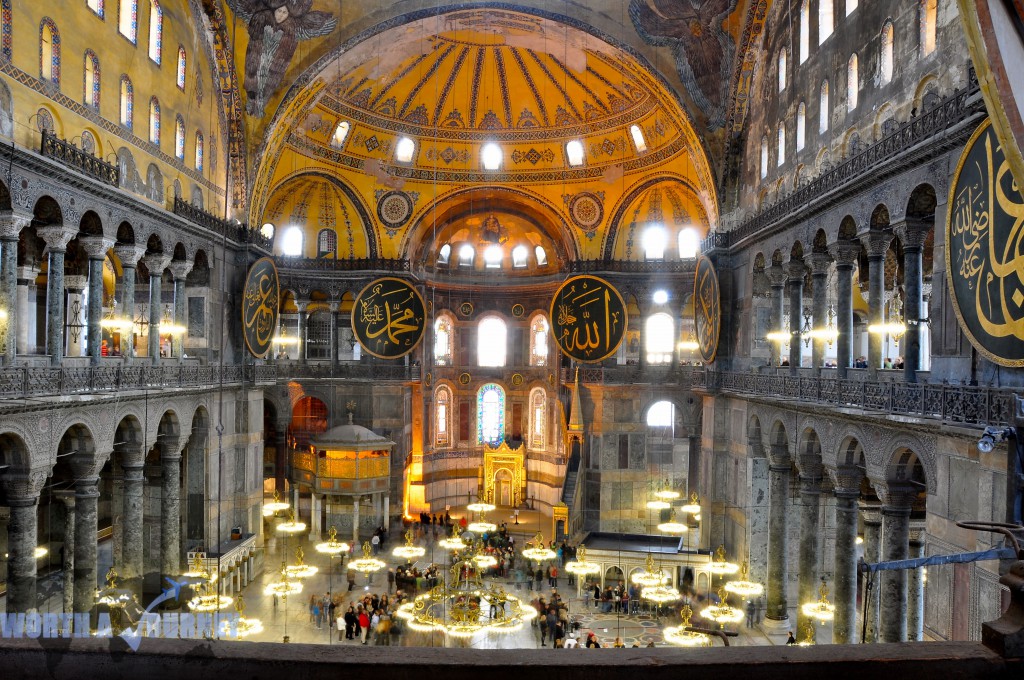
Dome
The dome of Hagia Sophia has spurred particular interest for many art historians, architects and engineers because of the innovative way the original architects envisioned it. The dome is carried on four spherical triangular pendentives, one of the first large-scale uses of them. The pendentives are the corners of the square base of the dome, which curve upwards into the dome to support it, restraining the lateral forces of the dome and allowing its weight to flow downwards. It was the largest pendentive dome in the world until the completion of St. Peter’s Basilica, and has a much lower height than any other dome of such a large diameter.
The great dome at the Hagia Sophia is one hundred and seven feet in diameter and is only two feet thick. The main building material for the Hagia Sophia composed of brick and mortar. Brick aggregate was used to make roofs easier to construct. The aggregate weighs one hundred and fifty pounds per cubic foot, an average weight of masonry construction at the time. Due to the materials plasticity it was chosen over cut stone due to the fact that aggregate can be used over a longer distance.
The weight of the dome remained a problem for most of the building’s existence. The original cupola collapsed entirely after the earthquake of 558; in 563 a new dome was built by Isidore the younger, a nephew of Isidore of Miletus. Unlike the original, this included 40 ribs and was raised 20 feet, in order to lower the lateral forces on the church walls. A larger section of the second dome collapsed as well, in two episodes, so that today only two sections of the present dome, in the north and south side, still date from the 562 reconstructions. Of the whole dome’s 40 ribs, the surviving north section contains eight ribs, while the south section includes six ribs.
Although this design stabilizes the dome and the surrounding walls and arches, the actual construction of the walls of Hagia Sophia weakened the overall structure. The bricklayers used more mortar than brick, which is more effective if the mortar was allowed to settle as the building would have been more flexible; however, the builders raced to complete the building and left no time for the mortar to cure before they began the next layer. When the dome was erected, its weight caused the walls to lean outward because of the wet mortar underneath. When Isidore the Younger rebuilt the fallen cupola, he had first to build up the interior of the walls to make them vertical again. Additionally, the architect raised the height of the rebuilt dome by approximately six m (20 feet) so that the lateral forces would not be as strong and its weight would be transmitted more effectively down into the walls. Moreover, he shaped the new cupola like a scalloped shell or the inside of an umbrella, with ribs that extend from the top down to the base. These ribs allow the weight of the dome to flow between the windows, down the pendentives, and ultimately to the foundation.
Hagia Sophia is famous for the light that reflects everywhere in the interior of the nave, giving the dome the appearance of hovering above. This effect was achieved by inserting forty windows around the base of the original structure. Moreover, the insertion of the windows in the dome structure lowers its weight.
拱頂
由於原始建築師設想的創新方式,聖索非亞大教堂的圓頂引起了許多藝術史學家,建築師和工程師的特別興趣。圓頂由四個球形三角形套管承載,這是它們的首次大規模使用之一。底座是圓頂方形底座的角落,其向上彎曲到圓頂中以支撐圓頂,限制圓頂的側向力並允許其重量向下流動。它是世界上最大的穹頂,直到聖彼得大教堂建成,並且其高度比任何其他如此大直徑的穹頂低得多。
聖索非亞大教堂的巨大圓頂直徑為一百七十英尺,厚度只有兩英尺。聖索非亞大教堂的主要建築材料由磚和砂漿組成。磚骨料用於使屋頂更容易建造。總重量為每立方英尺一百五十磅,是當時磚石結構的平均重量。由於材料的可塑性,因為聚合物可以在更長的距離上使用,所以它被選擇在切割石材上。
對於建築物的大部分存在,圓頂的重量仍然是一個問題。原來的沖天爐在558年的地震後完全坍塌;在563年,年輕的伊西多爾建造了一個新的穹頂,他是米利都伊西多爾的侄子。與原版不同,這包括40個肋骨並且被抬高20英尺,以降低教堂牆壁上的側向力。第二個圓頂的較大部分也在兩個階段中坍塌,因此今天僅在北部和南部的圓頂的兩個部分仍然可以從562個重建開始。在整個圓頂的40個肋骨中,倖存的北部包含八個肋骨,而南部包括六個肋骨。
雖然這種設計穩定了圓頂和周圍的牆壁和拱門,但聖索菲亞大教堂城牆的實際建築削弱了整體結構。磚瓦使用的砂漿多於磚,如果砂漿被允許沉降,則更有效,因為建築物更靈活;然而,建造者們爭先恐後地完成建築物,並且在他們開始下一層之前沒有時間讓砂漿固化。當圓頂豎立時,由於下面的濕砂漿,其重量導致牆壁向外傾斜。當Isidore the Younger重建倒下的沖天爐時,他首先要建造牆壁的內部以使它們再次垂直。此外,建築師將重建圓頂的高度提高了約6米(20英尺),這樣側向力就不會那麼強,其重量會更有效地傳遞到牆內。此外,他塑造了新的圓屋頂,如扇形殼或傘的內部,肋骨從頂部向下延伸到底部。這些肋條允許圓頂的重量在窗戶之間流動,沿著壓痕物流動,並最終流到地基上。
聖索菲亞大教堂以在教堂中殿內部到處反射的光線而聞名,使圓頂呈現在上方盤旋的外觀。通過在原始結構的底部周圍插入四十個窗口來實現這種效果。此外,窗戶在圓頂結構中的插入降低了其重量。
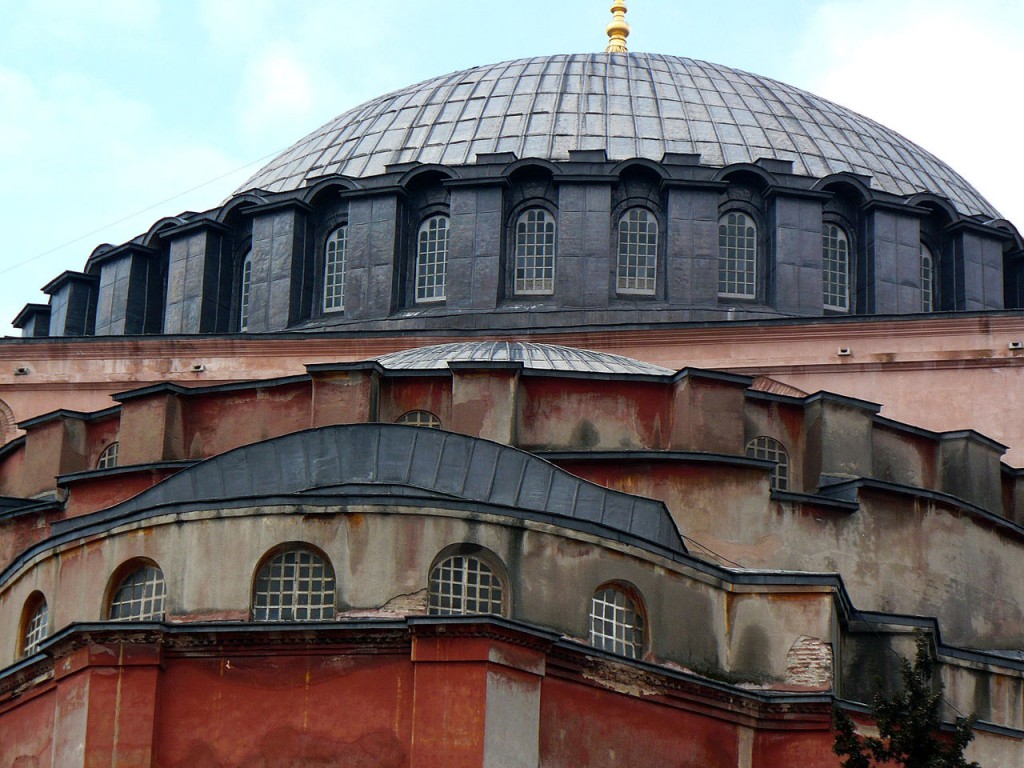
Minarets
The minarets were an Ottoman addition and not part of the original church’s Byzantine design. They were built for notification of invitations for prayers and announcements. Mehmed had built a minaret made from wood over one of the half domes soon after Hagia Sophia’s conversion from a cathedral to a mosque. This minaret does not exist today. One of the minarets (at southeast) was built from red brick and can be dated back from the Fatih Sultan Mehmed period or Beyazıd II period. The other three were built from white limestone and sandstone, of which the slender northeast column was erected by Sultan Bayezid II during the Selim II period, while the two identical larger minarets to the west were erected by Sultan Selim II and designed by the famous Ottoman architect Mimar Sinan. Both are 60 metres in height, and with their thick and massif patterns, complete Hagia Sophia’s main structure. Many ornaments and details were added to these minarets on repairs during the 15th, 16th, and 19th centuries, which reflect each period’s characteristics and ideals.
Buttresses
Numerous buttresses have been added throughout the centuries. The flying buttresses to the west of the building, although thought to have been constructed by the Crusaders upon their visit to Constantinople, are actually built during the Byzantine era. This shows that the Byzantines had prior knowledge of flying buttresses which can also be seen at Hosios Loukas in Central Greece, the Rotunda of Galerius in Thessaloniki, and San Vitale in Ravenna. Other buttresses were constructed during the Ottoman times under the guidance of the architect Sinan. A total of 24 buttresses were added.
尖塔
尖塔是奧斯曼帝國的補充,而不是原始教堂的拜占庭式設計的一部分。它們的建立是為了通知祈禱和公告的邀請。在聖索非亞大教堂從大教堂轉為清真寺之後不久,穆罕默德在半圓頂之一上建造了一座由木頭製成的尖塔。這個尖塔今天不存在。其中一個尖塔(位於東南部)是用紅磚建造的,可以追溯到法提赫蘇丹穆罕默德時期或BeyazıdII時期。其他三個是用白色石灰岩和砂岩建造的,其中細長的東北立柱是在塞利姆二世期間由蘇丹貝葉齊德二世建造的,而西邊的兩個相同的大型尖塔由蘇丹塞利姆二世建造,由著名的奧斯曼帝國設計。建築師Mimar Sinan。兩者都是60米高,厚厚的地塊圖案,完整的聖索非亞大教堂的主要結構。在15,16和19世紀,這些尖塔上有許多裝飾品和細節被添加到修理中,這反映了每個時期的特徵和理想。
扶壁
幾個世紀以來,已經增加了許多支撐物。建築物西側的飛拱雖然被認為是十字軍在訪問君士坦丁堡時建造的,但實際上是在拜占庭時代建造的。這表明拜占庭人有飛行支柱的先驗知識,也可以在希臘中部的Hosios Loukas,塞薩洛尼基的加萊里烏斯圓形大廳和拉文納的聖維塔勒看到。在奧斯曼帝國時期,在建築師思南的指導下建造了其他支柱。共增加了24個扶壁。
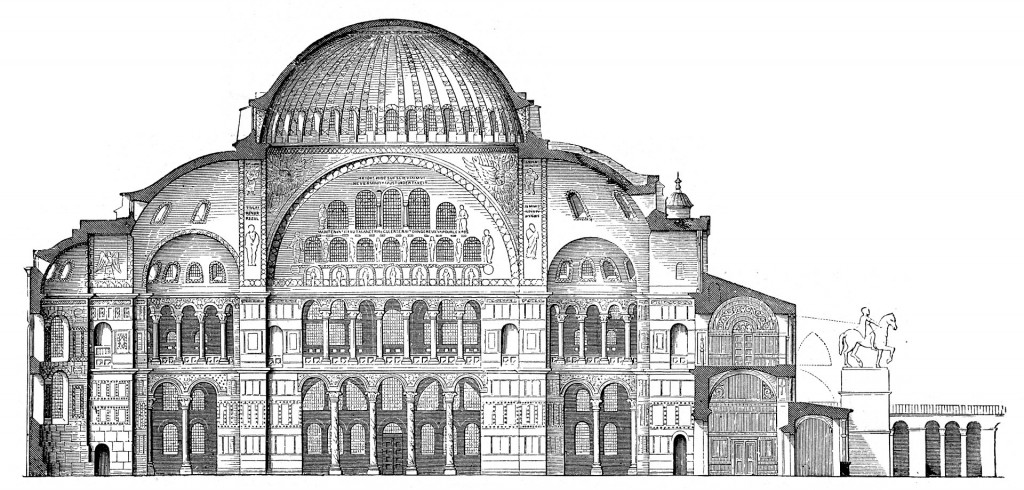
FROM:https://en.wikipedia.org/wiki/Hagia_Sophia
FROM:From Hagia Sophia to Suleymaniye Mosque, Istanbul | Civilisations – BBC Two
FROM:Istanbul, Turkey: Hagia Sophia
Don’t you think it’s addictive?
Want to know more about the beauty of architecture?
Come and join our members to explore the beauty of architectural design.
覺得看得不過癮嗎?
想要知道更多建築之美嗎?
快來加入我們的會員,一同探索建築設計之美。
The above article is purely for appreciation and sharing purposes, as well as the construction of new technology and the public can be in-depth understanding of the information at the same time there are sources, will be able to query, no use of the document as a commercial transaction, if illegal, please inform the We will immediately remove the site, thank you for cooperation.
以上文章純粹作為欣賞及分享用途,以及將建築新型技術傳遞給與大眾能夠深入了解,同時資料還有來源,將可查詢,絕無使用該文件資料作為商業交易行為,如有違法請務必告知該網站我們將立即處理撤除,謝謝合作。

